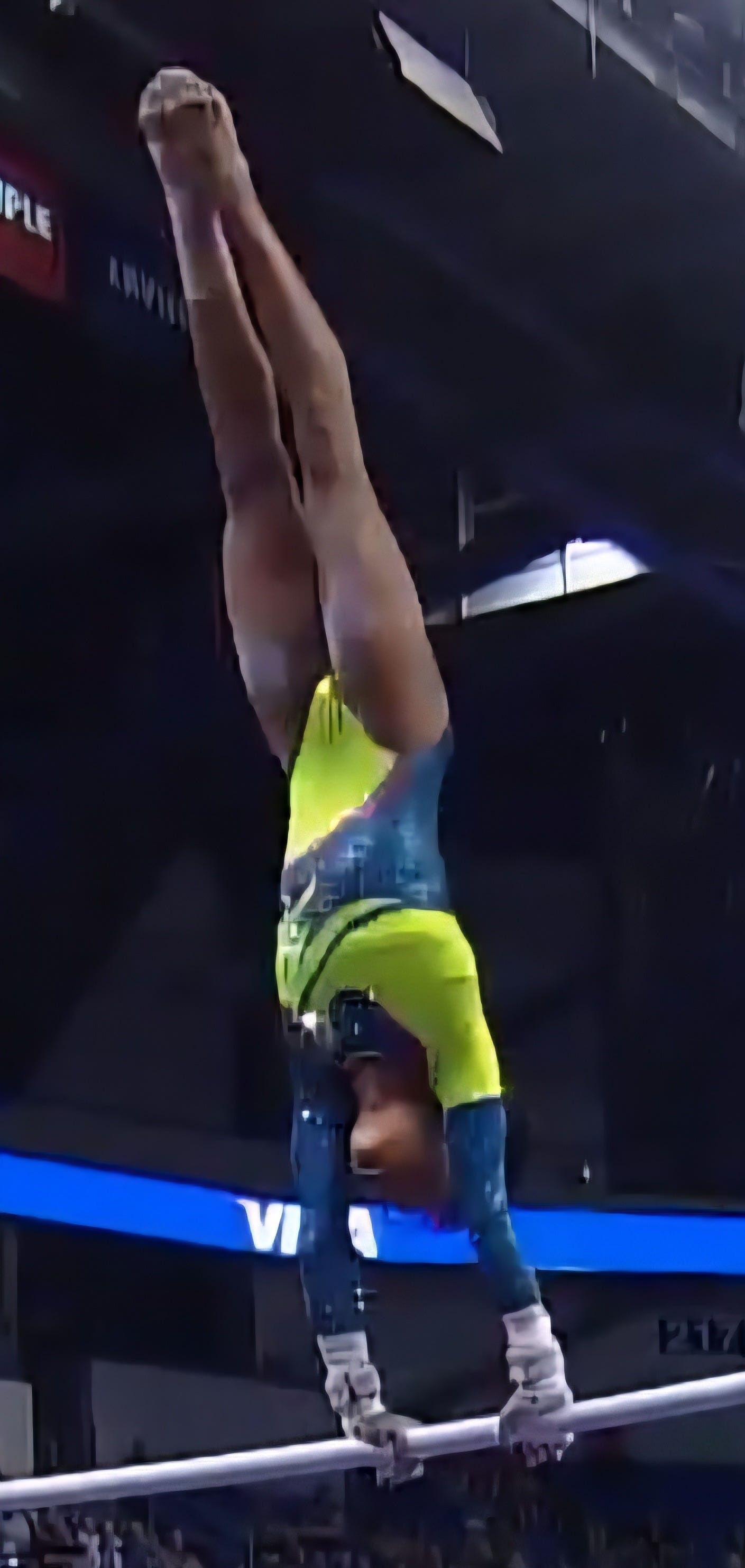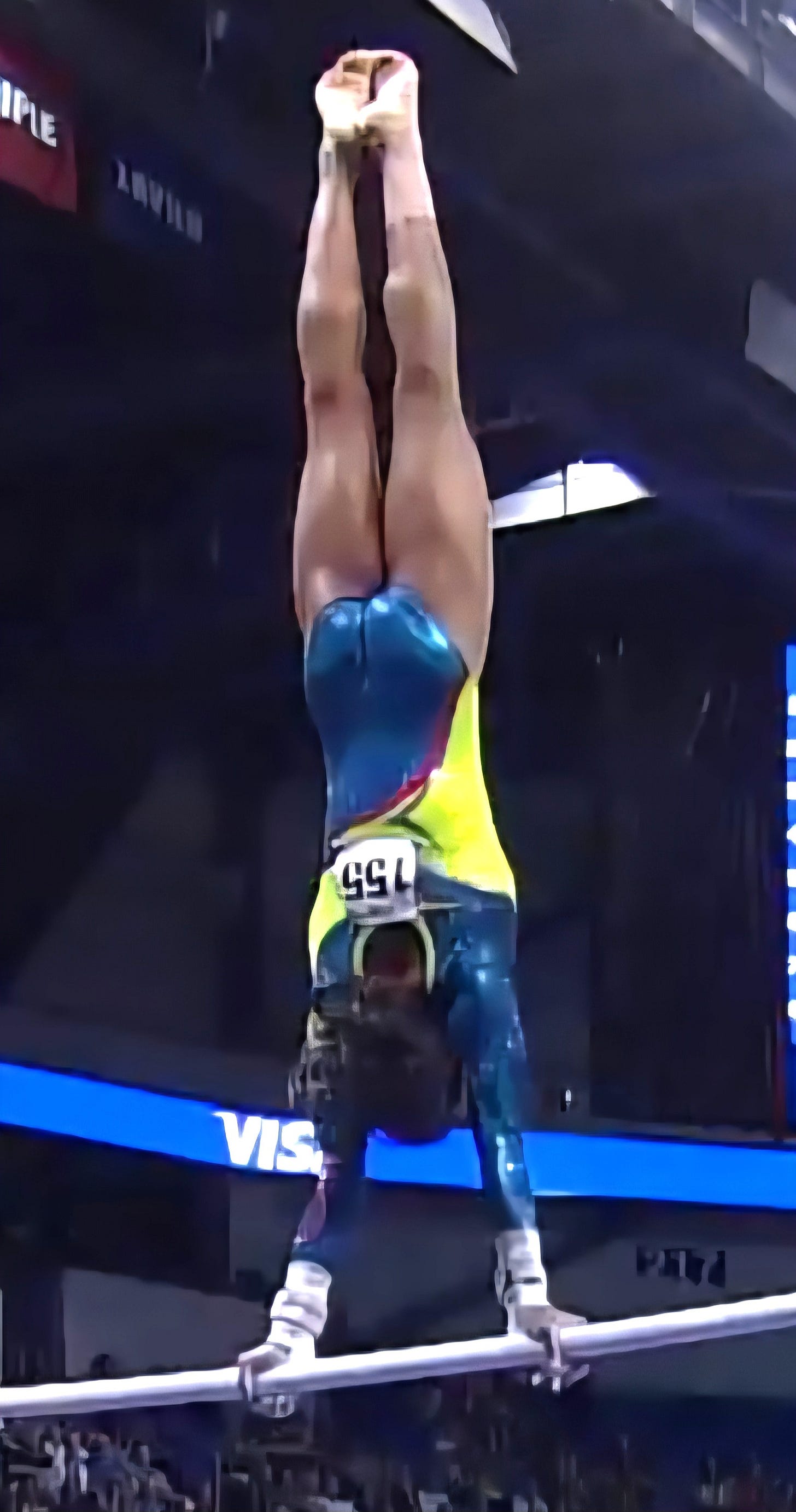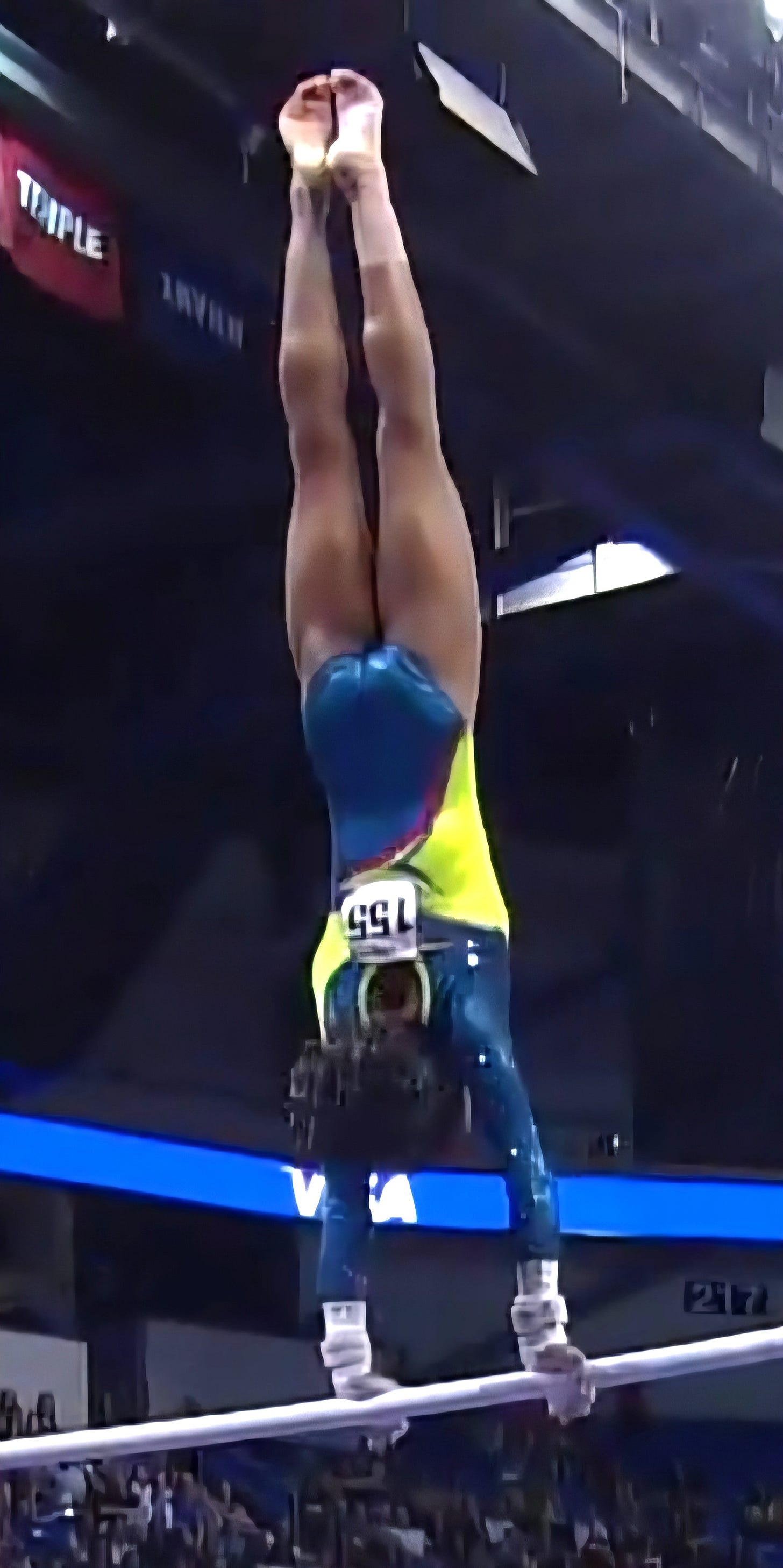Decoding the Composition Requirement: Uneven Bars
We’re continuing our journey to decode the code of points by delving into the world of composition requirements! This week we’ll start off with what judges are looking for from a routine on the uneven bars.
What Are Composition Requirements?
Composition requirements are a broad set of skills or connections that judges expect to see in any and every elite gymnastics routine. Uneven bars, balance beam, and floor each have four requirements. All requirements must be fulfilled by skills in the code of points, though one skill can be used to meet multiple requirements.
Despite the name, there’s technically no penalty for failing to meet any of them. You won’t get disqualified, and there’s no deduction for it.
However, gymnasts are still heavily incentivized to meet them. Each requirement is worth half a point towards their difficulty score. This gives the routine a base of two full points. So while you don’t have to meet them, you’re severely handicapping yourself if you don’t.
None of the skills used for composition requirements have to be one of the counting skills of the routine. For many, it’s easiest to simply get them out of the way with the simplest skill possible to then focus on the skills they actually want to count.
However, for others, integrating these requirements into their counting skills is the most efficient approach. On uneven bars especially, where gymnasts spend the entire time either in the air, swinging under the bar, or up in a handstand, it can save a lot of energy to do as few skills as possible.
Requirement 1: Transition from High Bar to Low Bar
A gymnast must move from the high bar to the low bar at some point in their routine. This is to prevent gymnasts from competing routines exclusively on the high bar and ignoring the low bar entirely, or from doing a simple transition from the low bar to the high bar and continuing the entire routine from there. The use of both bars, transitioning between one and the other, is what separates the event from men’s high bar.
Requirement 2: Same Bar Release
Gymnasts must, at some point in their routine, let go of and regrasp the same bar. This is typically where difficulty is built, and where the excitement in routines tends to take place. So why does it need to be a requirement?
This composition requirement serves to maintain a standard of difficulty for elite gymnastics. While skilled bar workers have no problem meeting it, those who might struggle with it are forced to figure something out to reach the elite standard.
Requirement 3: Grip Changes
Skills from two different styles of grips must be performed at some point in the routine. While all gymnasts have a grip style they’re most comfortable in, they must show their ability to perform a skill in at least two out of the existing three.
What are grip styles? These are the different ways that gymnasts grasp the bars when competing.
Regular Grip
Regular grip is when your hands are wrapping around the bar in the same direction as the rest of your body. This is the only grip that allows the gymnast to swing forward. It is the most common grip used in gymnastics, with the majority of skills done in this style.
Reverse Grip
The difference between reverse grip, also called undergrip, and regular grip is a simple flick of the wrist. As the two names for this style implies, your hands wrap under and around the bar facing the opposite direction, or in reverse, as the rest of your body. Because of this, the gymnast can only swing backwards while in this grip style.
L-Grip
L-grip is almost identical to reverse grip. They both involve the hand wrapping around the bar in the opposite direction as regular grip, and both result in the gymnast swinging backwards. However, there is one major difference between them.
To achieve a reverse grip, you twist your wrist outward, with your thumb rotating over the rest of your hand. For most people this is the most natural way of twisting your wrist, as it requires the least amount of flexibility of the joints.
For L-grip, however, you twist your wrist inward, rotating your thumb under your hand to achieve it. This may seem like an inconsequential difference, but in truth, it requires a significant amount of shoulder flexibility. For this reason, skills specified as done in L-grip are typically worth more difficulty than their reverse grip counterparts.
Requirement 4: Full Turning Pirouette
On uneven bars, a pirouette is a skill that begins and ends in a handstand on the same bar. Gymnasts must complete a full 360 degree turn while in that handstand. While not always the most difficult of skills, pirouettes are often the most challenging in terms of technique. Like with the same bar release requirement, this one ensures that the gymnast has reached elite-level mastery of this event.
Regardless of how they choose to meet composition requirements, gymnasts are expected to include them if they want a chance to be competitive. Missing even one can be the difference between winning it all or going home empty handed.
Join us next time as we break down balance beam composition requirements in our never ending journey to decode the code of points!





Thank you for a great article. Your command of the Code of Points is impressive.
I’ve been hoping someone knowledgeable would start a gymnastics Substack. I’m so happy to find you!